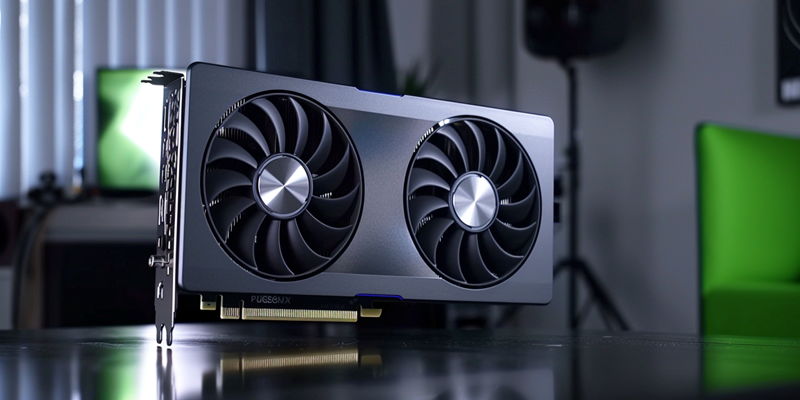The gaming community is brimming with anticipation as insider Kopite7kimi unveils tantalizing details about NVIDIA’s GeForce RTX 50 “Blackwell” GPUs. As we edge closer to their late 2024 reveal, the question on every gamer and tech enthusiast’s mind is: Will these GPUs redefine the gaming experience? In this article, we delve into the architecture, specifications, and expected performance of NVIDIA’s latest foray into graphics innovation. With a potential combination of increased core counts and advanced memory configurations, NVIDIA’s upcoming GPUs are gearing up to be more than just a routine upgrade, promising to disrupt the gaming scene with groundbreaking performance.
Peering into NVIDIA’s “Blackwell” Architecture
The GeForce RTX 50 series, codenamed “Blackwell,” is expected to follow in the footsteps of the RTX 40 “Ada” series in terms of Graphics Processing Clusters (GPC) counts, with some tweaks. NVIDIA’s approach suggests a careful balance between innovation and continuity of design. This architecture maintains a level of familiarity, yet the individual die configurations promise new frontiers of performance. The flagship GB202 die may see a bump in Stream Multiprocessors (SMs), speculated to be configured with 12 GPCs and an 8×2 SM setup, summing up to an impressive 192 SMs in total. This boost in sheer processing capability could significantly enhance the fidelity of gaming visuals, making the GPUs attractive to enthusiasts seeking top-tier performance.
In contrast, the GB203 die is also causing ripples of excitement within the tech community. Anticipated to support a 7 GPCs setup, it deviates from the expected 6×8 arrangement and signifies that NVIDIA is not just scaling up but also refining its GPU design to cater to varied performance needs. This speaks volumes about the company’s strategy in addressing demands across the board – from hardcore gamers to professional creators seeking powerful rendering capabilities. By doing so, Blackwell could influence the entire graphics processor market, spelling a new era for the visualization of virtual worlds.
Upcoming Dies and Memory Configurations
The RTX 50 “Blackwell” lineup is slated to introduce several new dies, catering to broad segments of the market. Attention has particularly been drawn toward the speculated inclusion of the GB202 and GB203 dies in the short term, setting a premise for NVIDIA’s roadmap. While not much is spoken of the GB205, GB206, and GB207, there is intrigue surrounding the configurations they might bring to the table. One intriguing proposition making rounds in the tech circles is the rumored SKU with a 448-bit bus interface complemented by 28 GB of high-speed GDDR7 memory. This configuration, if materialized, pushes the envelope in terms of throughput and storage capacity, potentially establishing a new norm for mid-range GPU capabilities.
Hitherto anticipated features such as the 512-bit interface may give way to the more flexible 448-bit alternative, which hints at NVIDIA’s holistic strategy to cater across performance spectrums. This possibility could offer a glimpse into a mid-tier powerhouse, sporting aspects of the high-end RTX 5090’s performance at a fraction of the cost. Sweeping changes to memory technology, such as the jump to GDDR7, only add to the exciting prospects of achieving faster and more expansive gaming landscapes, which could drive the RTX 50 series to cement NVIDIA’s positioning as a market leader in the gaming GPU sector.
Launch Expectations and Targeted Audience
The gaming world watches with bated breath as the prospective Q4 2024 launch approaches for NVIDIA’s high-end champions, the GeForce RTX 5090 and RTX 5080. These front-runners are tipped to not just ascend the throne of premium graphics cards but also to usher in a lineup for a broader audience the following year. Targeting a 2025 release, NVIDIA aims to captivate gamers across the spectrum with the less discussed GB205, GB206, and GB207 models. Each die could hold the potential to reshape the gaming experience for its respective audience, iterating the significance of the Blackwell series in delivering performance adjustments across the market.
Embedded within the DNA of “Blackwell” is the promise of significant enhancements, particularly in how games are rendered and experienced. NVIDIA’s direction appears to provide a varied and substantial offering; from high-stakes enthusiasts to more budget-conscious gamers, everyone could find something in the RTX 50 series. Such strategic diversity could empower NVIDIA to forge a strong emotional connection with gamers who expect nothing but revolutionary advancements from their hardware.
Technical Leap with Novel Process Node
The gaming world is buzzing with excitement, as insider Kopite7kimi shares thrilling glimpses into NVIDIA’s GeForce RTX 50 “Blackwell” GPUs. As their late 2024 debut draws near, the burning question amongst gamers and tech lovers is straightforward: Will these new GPUs revolutionize the gaming landscape? In our article, we explore NVIDIA’s latest graphics endeavor, focusing on the architecture, projected specs, and their anticipated impact on gaming performance. What stands out is the possibility of these GPUs featuring a bump in core counts and enhanced memory settings. NVIDIA’s future releases are shaping up to be more than a mere update – they’re set to significantly shift the gaming industry with their exceptional performance capabilities, turning routine advancements into groundbreaking improvements for an elevated gaming experience.

